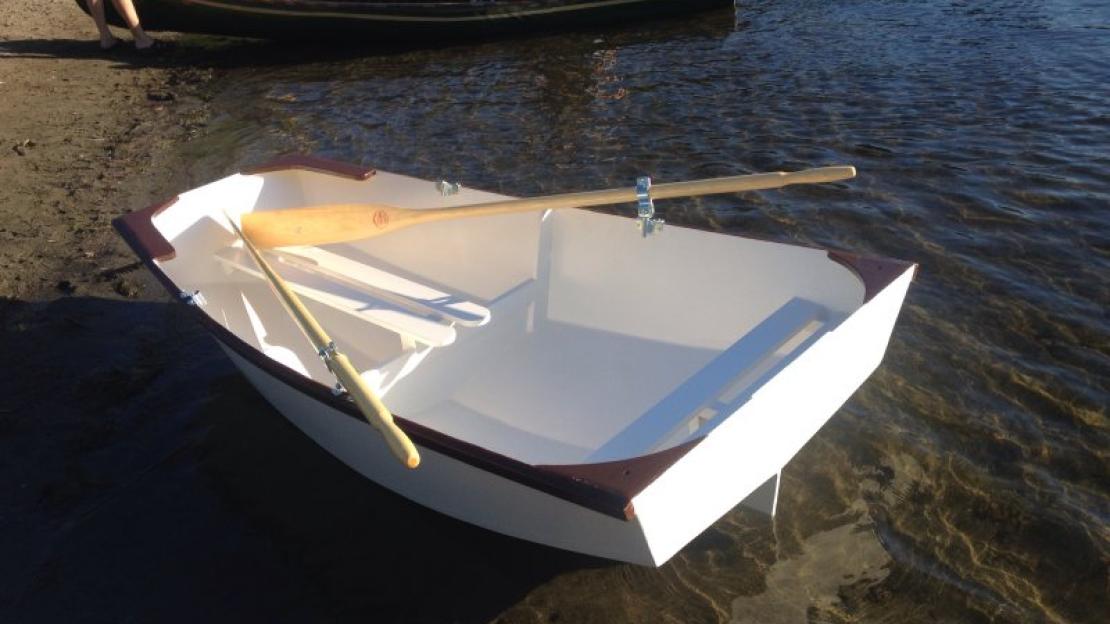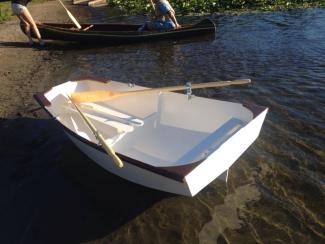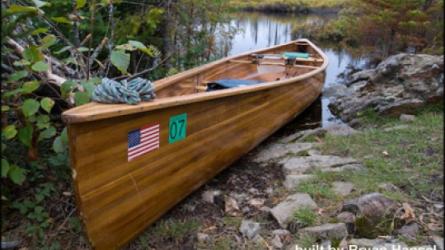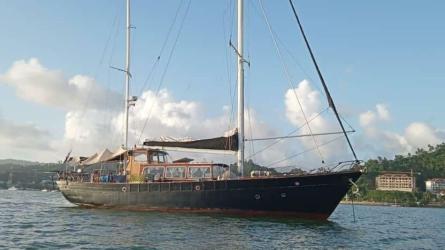
Oar / Paddle
TWEAK
Here is a small dinghy which can be used for fishing, pleasure rowing or as a tender of a bigger boat. TWEAK was born by tweaking the popular D4/D5 dinghy. I wanted something similar but slightly smaller so I could fit it on my roof bars which are 4′ long and not too heavy so I could easily transport it to the water and back without the use of an additional dolly. My philosophy is that the faster we take our boats to the water the more use they get. So TWEAK ended up with a beam of 3′8″ (1.12m) and overall length of 7′3″ (2200mm). Freeboard was increased by inch and a half. The next thing I changed was the V-section of the bottom. TWEAK has a shallower bottom sections compared to the D4/D5 dinghy, thus increasing the initial stability of the boat. Still the V- bottom is there for better handling of small chop and improved tracking. Another change was increased beam towards the transom. This allows for better motion under an outboard motor – not more than 1.5HP or an electric trolling motor. The sides were flared more to reflect spray and small chop better. Inside layout was totally redesigned. I read about people complaining from the weight of the D4/D5 dinghy and how hard it is to car top by a single person. That’s why I kept the inside unobstructed by transverse seats providing more leg room for the crew. Weight is an important factor when lifting the dinghy up on the mother ship or retrieving it in the water. Prototype TWEAK weighs in at 46lb (21kg). The boat is made of wood, therefore she can not sink. She will float close to the surface full of water but won’t sink. Additional flotation can be provided by flotation/storage chambers made out of plywood with inspection ports/hatches. More details are available in the work instruction which comes with the set of plans. Both seating options are shown. The best place to re-board after a capsize would be from the rear transom. All parts of the boat including flotation chambers/seats fit on two sheets of 1/4″ (6mm) exterior grade plywood. Nesting of all components is shown to minimize waste. The boat can be built for less than 200 CAD (2016). Here is the bill of materials needed:
- Exterior grade plywood 4x8’ (1220x2440 mm), ¼” (6 mm) thick – 2 sheets;
- Fiberglass tape 3”(75 mm) wide by 6 oz.(200 gr/sq.m) – 20 yards(18 m);
- Epoxy resin – 1 gallon (3.78L) plus hardener;
- Others – bread flour, chip brushes, fairing compound or filler, paint, sandpaper;
Plans package consists of 4 pages of drawings (metric or imperial) and 20 pages of instructions with lots of photos. Technical support is always available through e-mail. After payment is processed you will receive an e-mail with two PDF attachments - drawing and work instruction. Plans in imperial units are set up to print on letter size paper at the convenience of your home printer. Metric plans are set up to print on A4 size paper.












